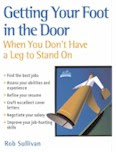According to the U.S. Department of Labor, health care and technology jobs are poised to soar between 2000 and 2010—despite a jobless recovery that lasted well into 2004.
Fastest-Growing Occupations
Total number of new jobs from 2000 to 2010
Occupations - Net increase - % Chg.
1. Computer software engineers, applications - 380,000 - 100%
2. Computer support specialist - 490,000 - 97%
3. Software engineers, systems software - 284,000 - 90%
4. Network and computer systems administrators - 185,000 - 82%
5. Network systems and data comm. analysts - 92,000 - 77%
6. Desktop publishers - 25,000 - 67%
7. Database administrators - 70,000 - 66%
8. Personal home care aides - 258,000 - 62%
9. Computer systems analysts - 258,000 - 60%
10. Medical assistants - 185,000 - 57%
11. Social and human service assistants - 147,000 - 54%
12. Physicians assistants - 31,000 - 53%
13. Medical records and health info techs - 66,000 - 49%
14. Computer and information systems managers - 150,000 - 48%
15. Home health aides - 292,000 - 47%
Source: Bureau of Labor Statistics
The job categories with the largest net increases and decreases from 2000 – 2010 are listed below:
1. Food preparation, and servers, including fast food: 673,000
2. Customer-service representatives: 631,000
3. Registered nurses: 561,000
4. Retail salespeople: 510,000
5. Computer-support specialists: 490,000
6. Cashiers (except gaming) 474,000
7. Office clerks, general 430,000
8. Security guards: 391,000
9. Computer-software engineers, applications: 380,000
10. Waiters and waitresses: 364,000
11. General and operations managers: 363,000
12. Truck drivers, heavy and tractor trailer: 346,000
13. Nursing aides, orderlies and attendants: 323,000
14. Janitors and cleaners: 317,000
15. Postsecondary teachers: 315,000
A few of the categories above warrant a little more explanation:
Food service workers: According to the National Restaurant Association’s own projections for the same period, the figure is more than double this estimate.
Customer-service representatives: Even as help-desk and other customer service jobs move overseas, the growth in Internet commerce is expected to yield a net increase in this category.
Registered nurses: The need for nurses, the largest group within the health care industry, will continue to expand as the baby-boomer population ages.
Retail salespeople: As it stands, retail sales is the largest single occupation with over 4 million workers. This is significant because 510,000 new jobs in this sector represents an increase of more than 10%.
Computer-support specialists: For the foreseeable future, computers and technology will continue to play an important role in our culture. At the same time, there will remain a strong need for people who can provide service and support. Some of this can be accomplished with tech support people overseas, but it’s unlikely that face-to-face support will be completely eliminated.
Security guards: Not surprisingly, the need for security guards—especially in office buildings and other likely terror targets—will continue to increase. However, most of these positions offer low pay and little opportunity for advancement.
Computer-software engineers, applications: As new software is developed and current programs are updated, the need for computer-software engineers is expected to remain relatively strong—especially as the 68 million baby boomers head toward retirement.
According to the U.S. Department of Labor, the following jobs categories are expected to experience to most significant losses between 2000 and 2010:
Farmers and ranchers: (328,000)
Order clerks: (71,000)
Tellers: (59,000)
Insurance-claim and –policy processing clerks: (58,000)
Word processors and typists: (57,000)
Sewing-machine operators: (51,000)
Dishwashers: (42,000)
Switchboard operators, including answering services: (41,000)
Loan interviewers and clerks: (38,000)
Computer operators: (33,000)
Source: Bureau of Labor Statistics[1]
It is worth noting that the projections above are consistent with former secretary of labor Robert Reich’s observation that order entry, claims processing and other routine tasks will, over time, either be automated or outsourced.
What The Labor Market Situation Means For You
Given the situation described above, the question is not “If,” or even “When,” but “What does this labor shortage mean for me and what can I do about it?”
After years of rapid growth in the labor force and endless corporate restructuring and downsizing, the laws of supply and demand will tilt decisively in favor of the individual. With this shift come opportunities and hazards. For the careful strategic planners, opportunities for professional development and financial reward will be plentiful. In contrast, the not-so-careful may find themselves sacrificing their personal lives to compensate for the lack of adequate labor.
Unlike the current labor market that has left countless unemployed workers wondering whether they’ll ever find another job, the upcoming labor shortage will exact a toll of a different sort. Not unlike the workers who survived corporate downsizing, people who find themselves at a company with too few employees are, if they aren’t careful, likely to inherit a workload that would previously have been handled by more than one person.
In late 2003, as the U.S. eased out of the recession, but before hiring picked up, an estimated 9 million people were unemployed. At that point, a survey by Monster.com indicated that 71% of workers spent more than 40 hours a week on the job. Not surprisingly, 57% of respondents described themselves as overworked.[2] As the labor market tightens, these numbers are likely to increase significantly.
The flip side of these potential pitfalls is opportunity. With the laws of supply and demand favoring the individual, you will have the power to shape your career and play an active role in creating opportunities for professional development.
[1] BLS Chart: Time Magazine, November 24,2003.
[2] “Now Hiring!” by Lisa Takeuchi Cullen. (Time Magazine, Nov. 23, 2003)
Thursday, June 14, 2007
Subscribe to:
Post Comments (Atom)

.jpg)
No comments:
Post a Comment